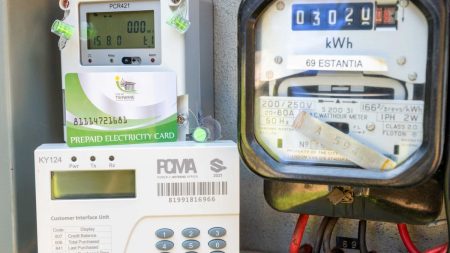Child welfare services play a crucial role in protecting and promoting the well-being of children. These services ensure that children grow up in safe, loving, and nurturing environments, free from abuse, neglect, and exploitation. In South Africa, where many children face poverty, domestic violence, and other social challenges, child welfare services are more important than ever.
This article explores the importance of child welfare services, the types of assistance available, the rights of children, and how communities can contribute to child protection.
Understanding Child Welfare Services
Child welfare services refer to government and non-governmental efforts to ensure children’s safety, well-being, and development. These services are designed to protect children from harm, provide support for families, and intervene in cases where children are at risk.
Objectives of Child Welfare Services
The primary goals of child welfare services include:
- Protecting children from abuse and neglect – Ensuring that children live in safe environments and receive appropriate care.
- Supporting families – Providing guidance, financial aid, and parenting resources to families struggling to care for their children.
- Providing foster care and adoption services – Placing children in loving homes when their biological families cannot care for them.
- Promoting child development – Ensuring that children have access to education, healthcare, and other essential services.
- Empowering communities – Educating communities on child rights and the importance of child protection.
Types of Child Welfare Services in South Africa
South Africa has various child welfare programs that cater to the diverse needs of children. These programs include:
1. Child Protection Services
Child protection services are designed to prevent and respond to cases of child abuse, neglect, and exploitation. These services include:
- Reporting and investigating child abuse – Child protection agencies investigate reports of abuse and take action where necessary.
- Removing children from harmful environments – If a child is in danger, they may be placed in a safe home or foster care.
- Counseling and rehabilitation – Providing psychological support to children who have experienced trauma.
2. Foster Care and Adoption Services
Foster care and adoption services provide children with stable, loving homes when their biological families cannot care for them.
- Foster care – Temporary care for children while their families receive support to improve their situation.
- Adoption – The permanent placement of a child with a new family.
Learn More: Foster Care vs. Adoption: What’s the Difference?
3. Early Childhood Development (ECD) Programs
Early childhood development programs focus on the education and care of young children. These services include:
- Preschools and daycare centers – Providing quality education and care for young children.
- Parenting workshops – Educating parents on child development and positive parenting techniques.
4. Support for Orphans and Vulnerable Children (OVC)
Orphans and vulnerable children (OVC) programs assist children who have lost their parents or live in difficult circumstances. Support includes:
- Financial aid and social grants – Providing funds to caregivers to meet the needs of orphaned children.
- Educational support – Helping children stay in school through scholarships and material assistance.
5. Child and Family Counseling Services
Many children experience emotional trauma due to abuse, neglect, or family separation. Counseling services help children heal and rebuild their lives.
6. Community-Based Child Welfare Initiatives
Communities play a crucial role in child welfare. Community-based initiatives include:
- Awareness campaigns – Educating the public about child abuse and how to prevent it.
- Safe houses and shelters – Providing refuge for children in dangerous situations.
- Volunteer programs – Encouraging community members to support child welfare efforts.
Children’s Rights and Legal Protection
The South African government has established laws and policies to protect children. Some of the key legal frameworks include:
1. The Children’s Act (Act 38 of 2005)
The Children’s Act ensures that children’s rights are upheld and outlines procedures for child protection, adoption, and foster care.
2. The Child Justice Act (Act 75 of 2008)
This law focuses on children in conflict with the law, ensuring that they receive fair treatment and rehabilitation instead of harsh punishment.
3. The Constitution of South Africa
The South African Constitution guarantees children’s rights, including the right to:
- Basic education
- Healthcare
- Protection from abuse and neglect
- Family or alternative care
4. The Role of the Department of Social Development (DSD)
The DSD oversees child welfare services and works with non-governmental organizations (NGOs) to provide support to children in need.
Learn More: How to Get Legal Aid for Child Custody Cases in South Africa
How Communities Can Help Protect Children
Everyone has a role to play in ensuring child welfare. Here are ways communities can help:
- Report child abuse – If you suspect a child is being abused, report it to the authorities.
- Support local child welfare organizations – Donate time or resources to charities working with children.
- Educate others – Spread awareness about children’s rights and the importance of child protection.
- Volunteer as a mentor – Become a positive role model for vulnerable children.
- Promote safe spaces for children – Ensure that schools, playgrounds, and homes are safe for kids.
Challenges in Child Welfare Services
Despite efforts to protect children, several challenges remain:
- Lack of resources – Many welfare organizations struggle with funding and staff shortages.
- High rates of poverty – Many children live in poor conditions that make them vulnerable to exploitation.
- Child abuse and neglect – Cases of child abuse remain high, requiring stronger interventions.
- Limited access to services – Rural areas often lack adequate child welfare facilities.
Solutions to These Challenges
- Increased government funding – More resources should be allocated to child welfare programs.
- Community involvement – Local communities should take an active role in child protection.
- Improved education and awareness – Parents, teachers, and caregivers need training on child protection.
Child welfare services are essential in ensuring that every child grows up in a safe, loving, and supportive environment. The South African government, NGOs, and communities must work together to protect children’s rights and provide the care they need.
By supporting child welfare services, reporting abuse, and advocating for children’s rights, we can create a brighter future for South Africa’s children.










